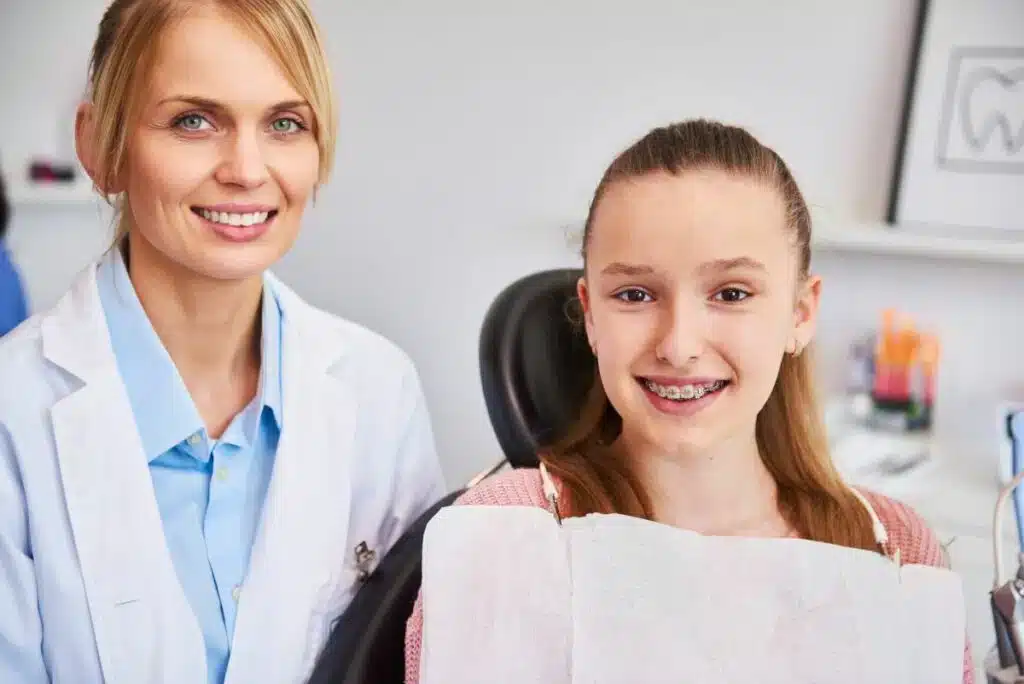The Buzz on Causey Orthodontics
Wiki Article
Causey Orthodontics for Dummies
Table of ContentsCausey Orthodontics Things To Know Before You BuyNot known Incorrect Statements About Causey Orthodontics 10 Simple Techniques For Causey OrthodonticsAll About Causey OrthodonticsThe Buzz on Causey Orthodontics
Overlooking occlusal connections, it was normal to get rid of teeth for a selection of oral problems, such as malalignment or overcrowding. The concept of an intact dentition was not commonly valued in those days, making bite correlations seem unnecessary. In the late 1800s, the idea of occlusion was vital for creating reputable prosthetic substitute teeth.As these concepts of prosthetic occlusion progressed, it ended up being an important tool for dental care. It remained in 1890 that the work and impact of Dr. Edwards H. Angle started to be felt, with his contribution to modern-day orthodontics particularly notable. Concentrated on prosthodontics, he showed in Pennsylvania and Minnesota prior to routing his attention towards dental occlusion and the treatments needed to maintain it as a regular problem, therefore coming to be known as the "dad of contemporary orthodontics".

The principle of perfect occlusion, as postulated by Angle and included right into a classification system, made it possible for a shift towards treating malocclusion, which is any type of inconsistency from typical occlusion. Having a full set of teeth on both arches was highly demanded in orthodontic treatment due to the demand for specific connections between them.
10 Easy Facts About Causey Orthodontics Explained
As occlusion came to be the key priority, facial percentages and visual appeals were overlooked - emergency orthodontist near me. To attain optimal occlusals without making use of outside pressures, Angle proposed that having excellent occlusion was the finest means to get maximum face aesthetics. With the passing away of time, it became rather apparent that also an extraordinary occlusion was not appropriate when thought about from a visual perspectiveCharles Tweed in America and Raymond Begg in Australia (who both studied under Angle) re-introduced dentistry removal right into orthodontics throughout the 1940s and 1950s so they could boost face esthetics while additionally making certain far better security worrying occlusal relationships. In the postwar duration, cephalometric radiography begun to be utilized by orthodontists for determining modifications in tooth and jaw position triggered by growth and treatment. It came to be obvious that orthodontic therapy can readjust mandibular growth, resulting in the development of practical jaw orthopedics in Europe and extraoral force procedures in the United States. Nowadays, both practical appliances and extraoral tools are applied around the globe with the objective of changing growth patterns and types. Going after real, or at least improved, jaw connections had actually ended up being the main objective of therapy by the mid-20th century.
The 6-Minute Rule for Causey Orthodontics
 Up until the mid-1970s, braces were made by covering steel around each tooth. https://helpsellmyfsbo.com/united-states/gainesville/jerry-stafford., it became feasible to rather bond steel braces to the teeth.
Up until the mid-1970s, braces were made by covering steel around each tooth. https://helpsellmyfsbo.com/united-states/gainesville/jerry-stafford., it became feasible to rather bond steel braces to the teeth.Andrews gave an informative definition of the ideal occlusion in long-term teeth. This has actually had purposeful results on orthodontic treatments that are carried out consistently, and these are: 1. Correct interarchal partnerships 2. Appropriate crown angulation (tip) 3. Correct crown disposition (torque) 4. No turnings 5. Limited contact factors 6. Apartment Contour of Spee (0.02.5 mm), and based upon these concepts, he found a treatment system called the straight-wire home appliance system, or the pre-adjusted edgewise system.
The advantage of the layout hinges on its brace and archwire combination, which needs only marginal cable bending from the orthodontist or medical professional (best orthodontist). It's appropriately called after this attribute: the angle of the port and density of the brace base ultimately figure out where each tooth is located with little demand for added manipulation
4 Simple Techniques For Causey Orthodontics
Both of these systems utilized identical braces for every tooth and demanded the flexing of an archwire in 3 airplanes for situating teeth in their desired settings, with these bends dictating supreme positionings. When it involves orthodontic appliances, they are divided into two types: removable and fixed. Detachable home appliances can be tackled and off by the client as needed.
Thus, mostly all modern set home appliances can be considered variations on this edgewise appliance system. Early 20th-century orthodontist Edward Angle made a major payment to the globe of dental care. He created four distinctive appliance systems that have actually been utilized as the basis for numerous orthodontic treatments today, disallowing a few exceptions.
Causey Orthodontics - An Overview

The cable ended in a thread, and to relocate ahead, an adjustable nut was used, which permitted a boost in area. By ligation, each private tooth was connected to this expansive archwire (affordable orthodontist near me). As a result of its restricted series of motion, Angle was not able to accomplish accurate tooth positioning with an E-arch
These tubes held a soldered pin, which might be rearranged at each consultation in order to move them in position. Referred to as the "bone-growing device", this device was theorized to motivate much healthier bone growth because of its capacity for transferring force straight to the origins. However, executing it showed troublesome actually.
Report this wiki page